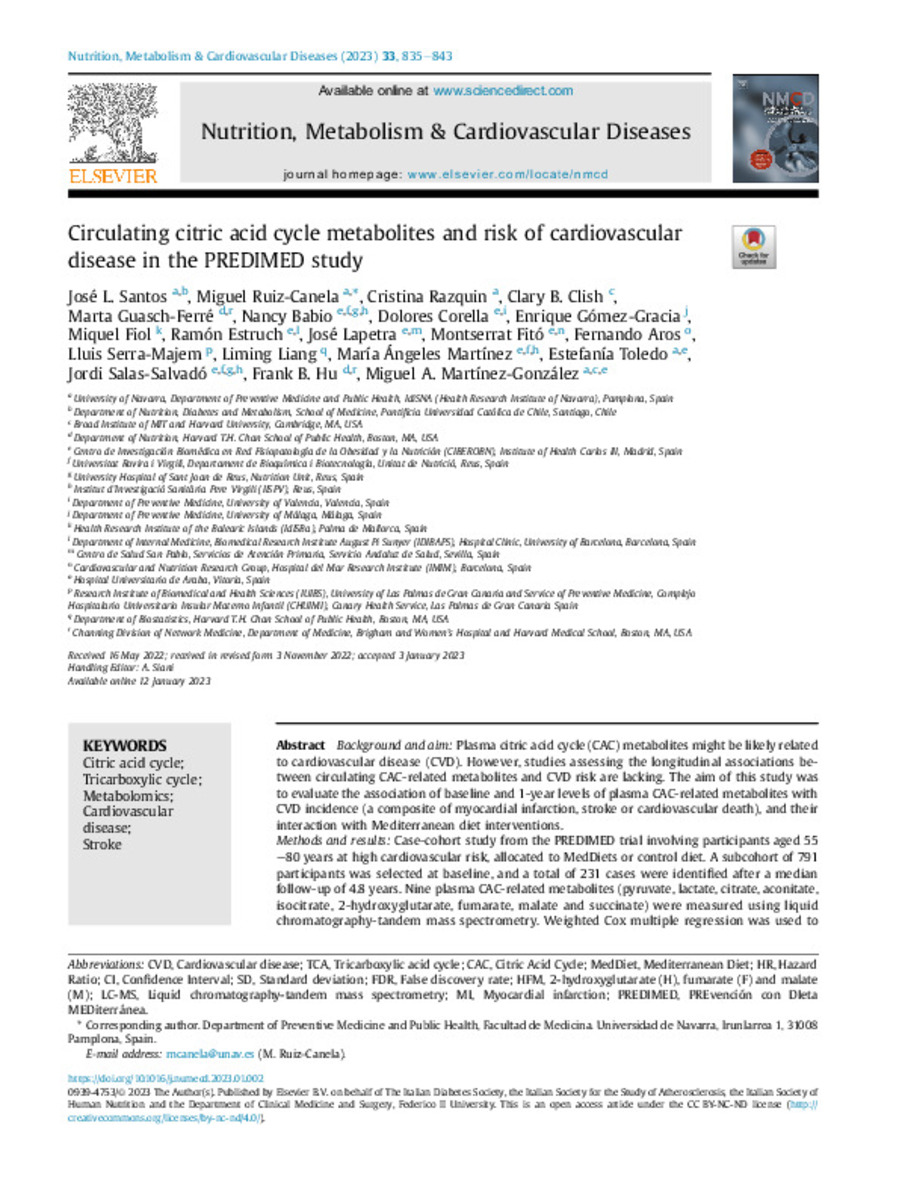Circulating citric acid cycle metabolites and risk of cardiovascular disease in the PREDIMED study
Keywords:
Citric acid cycle
Tricarboxylic cycle
Metabolomics
Cardiovascular disease
Stroke
Note:
This is an open access article under the CC BY-NC-ND license
Citation:
Santos, J.L. (José Luis); Ruiz-Canela, M. (Miguel); Razquin, C. (Cristina); et al. "Circulating citric acid cycle metabolites and risk of cardiovascular disease in the PREDIMED study". Nutrition, Metabolism and Cardiovascular Diseases. 33 (4), 2023, 835 - 843
Statistics and impact
0 citas en

0 citas en

Items in Dadun are protected by copyright, with all rights reserved, unless otherwise indicated.








